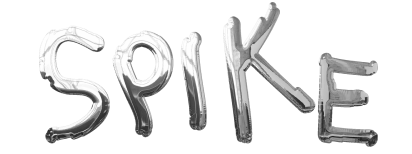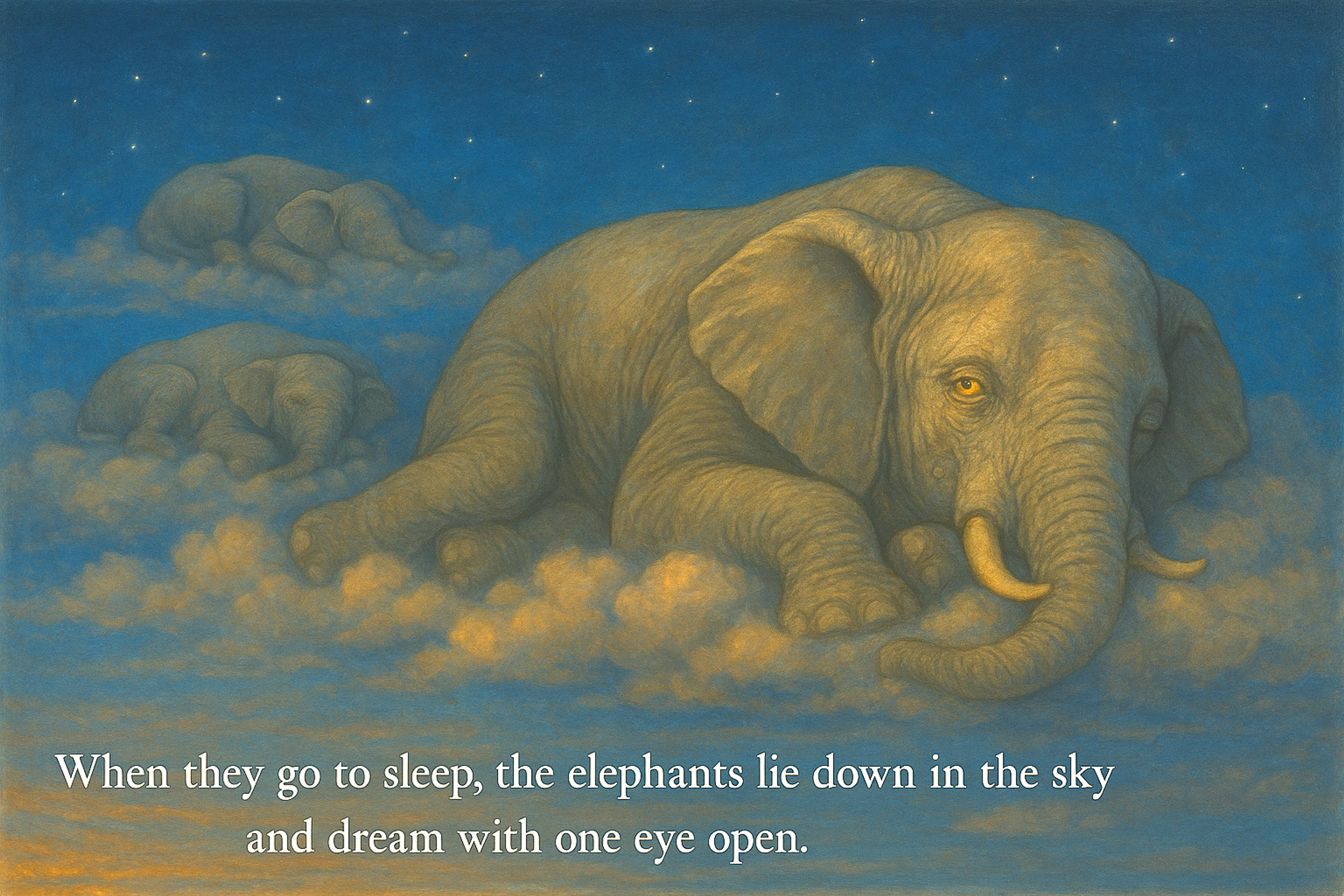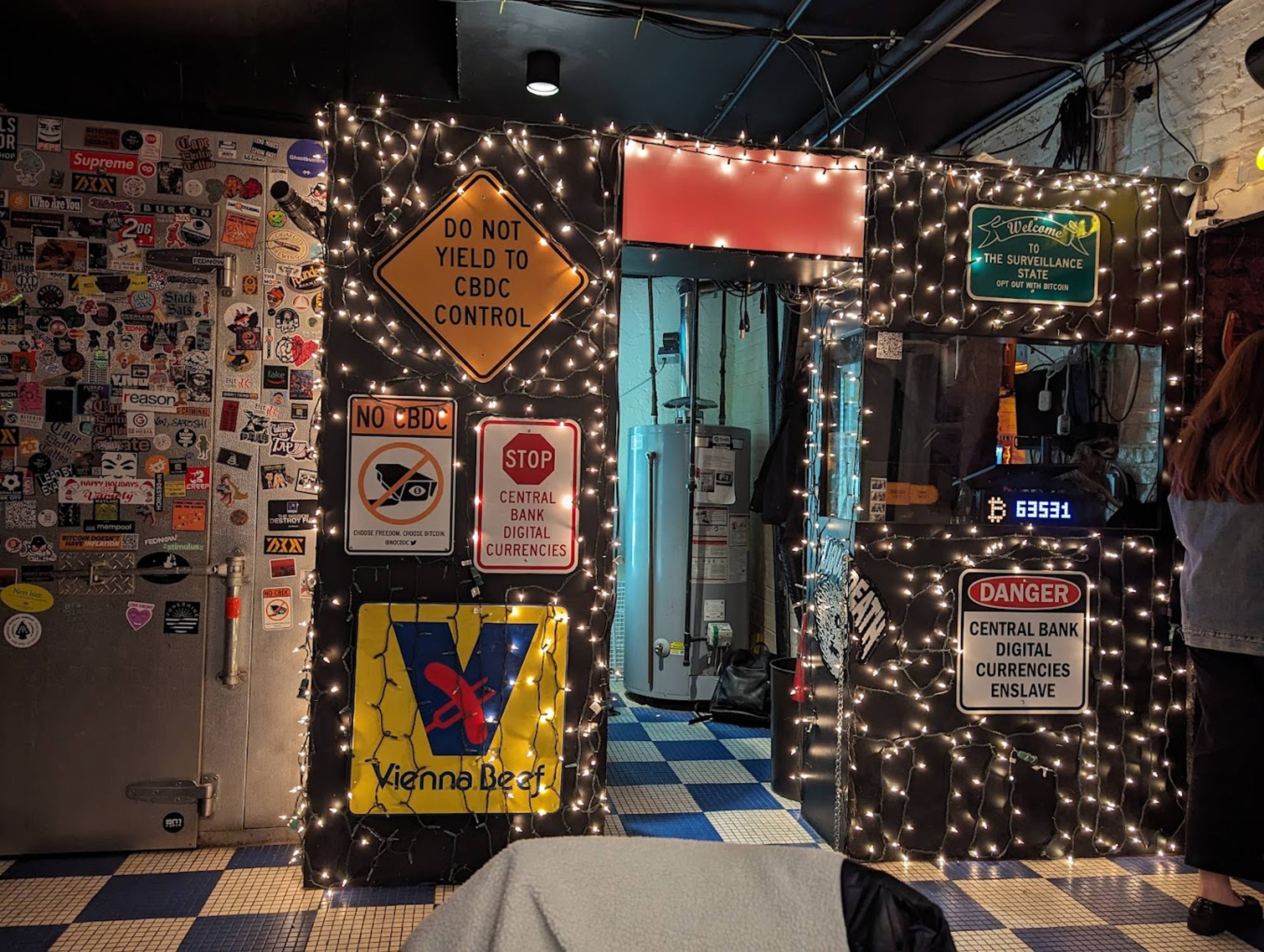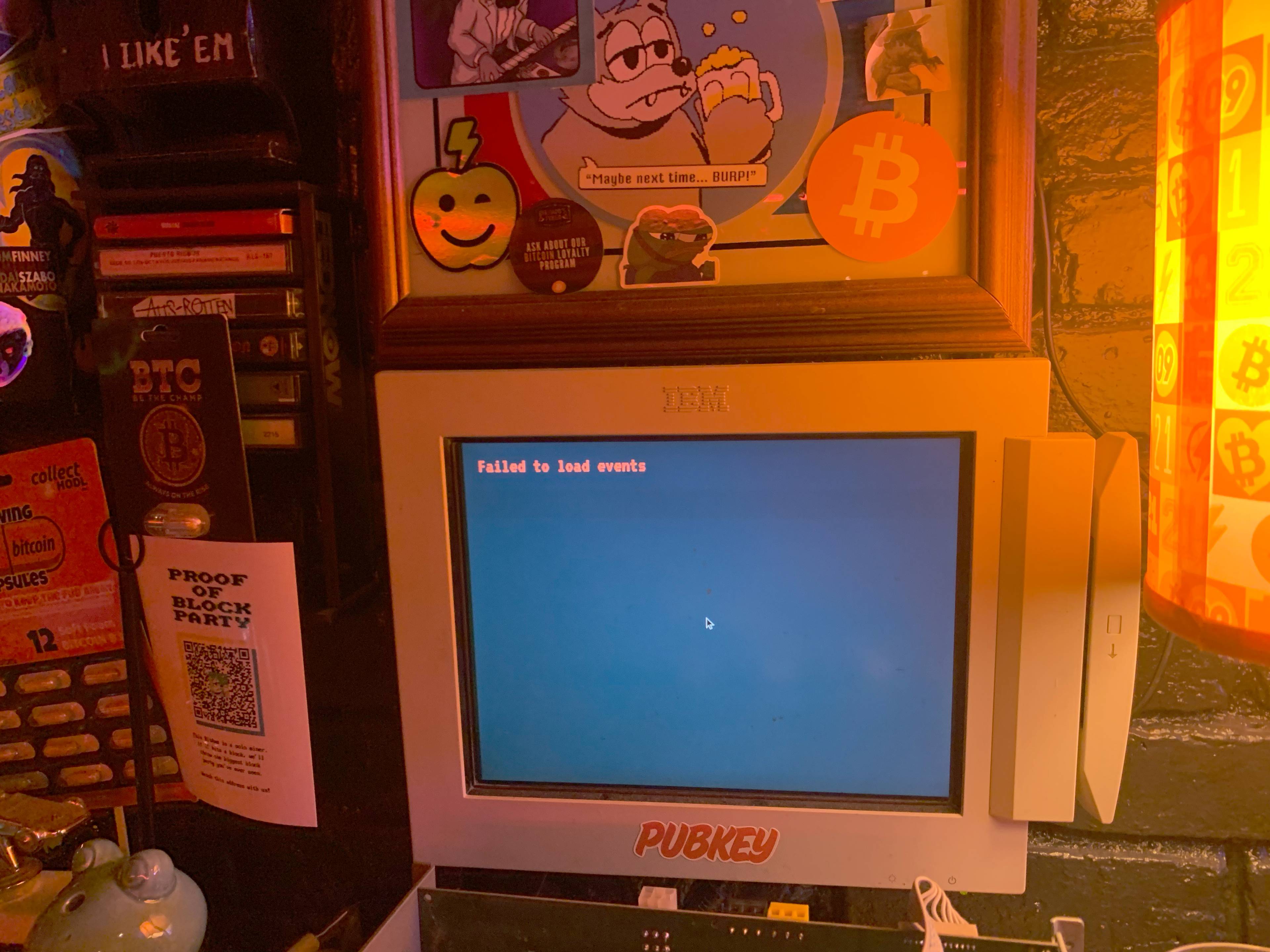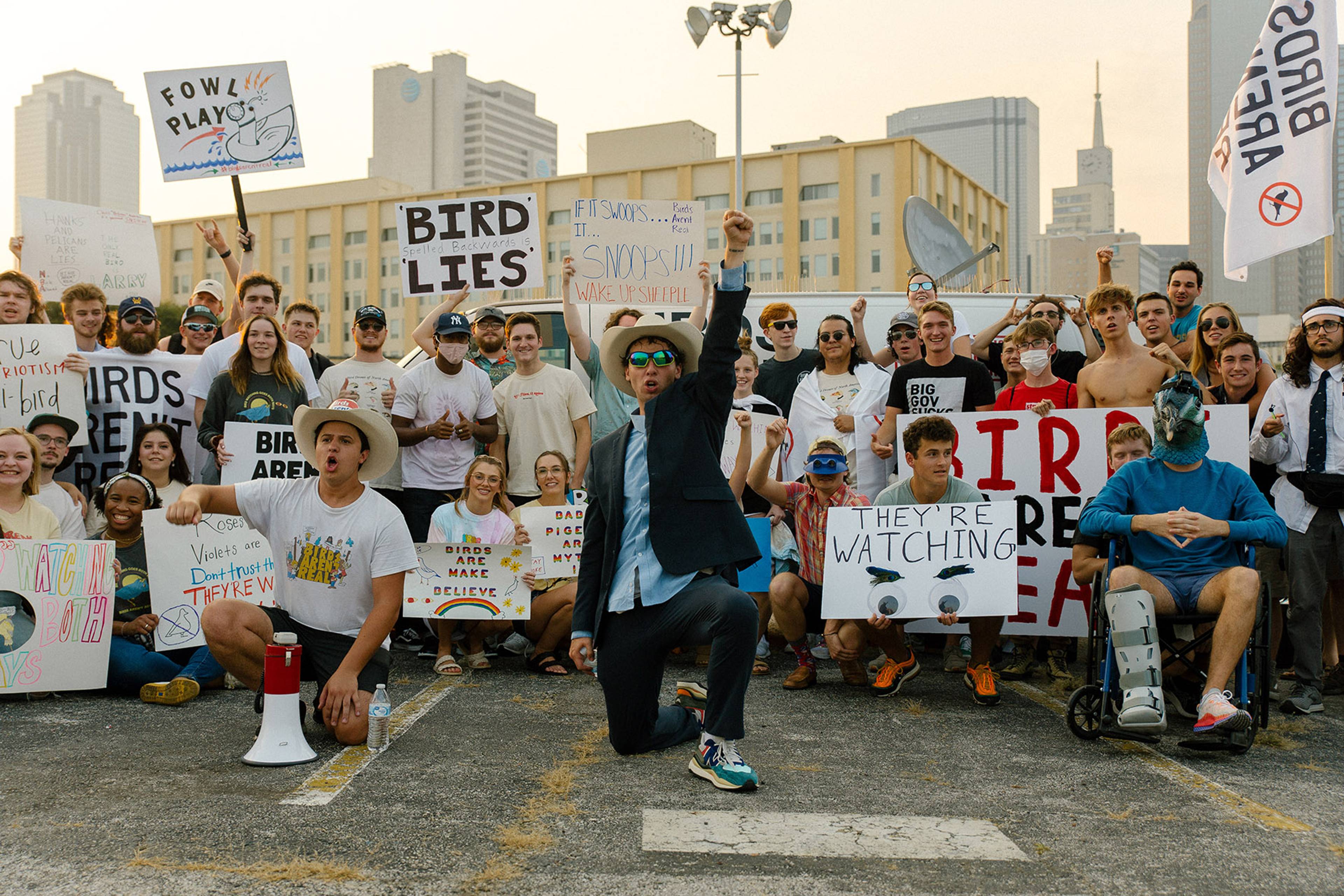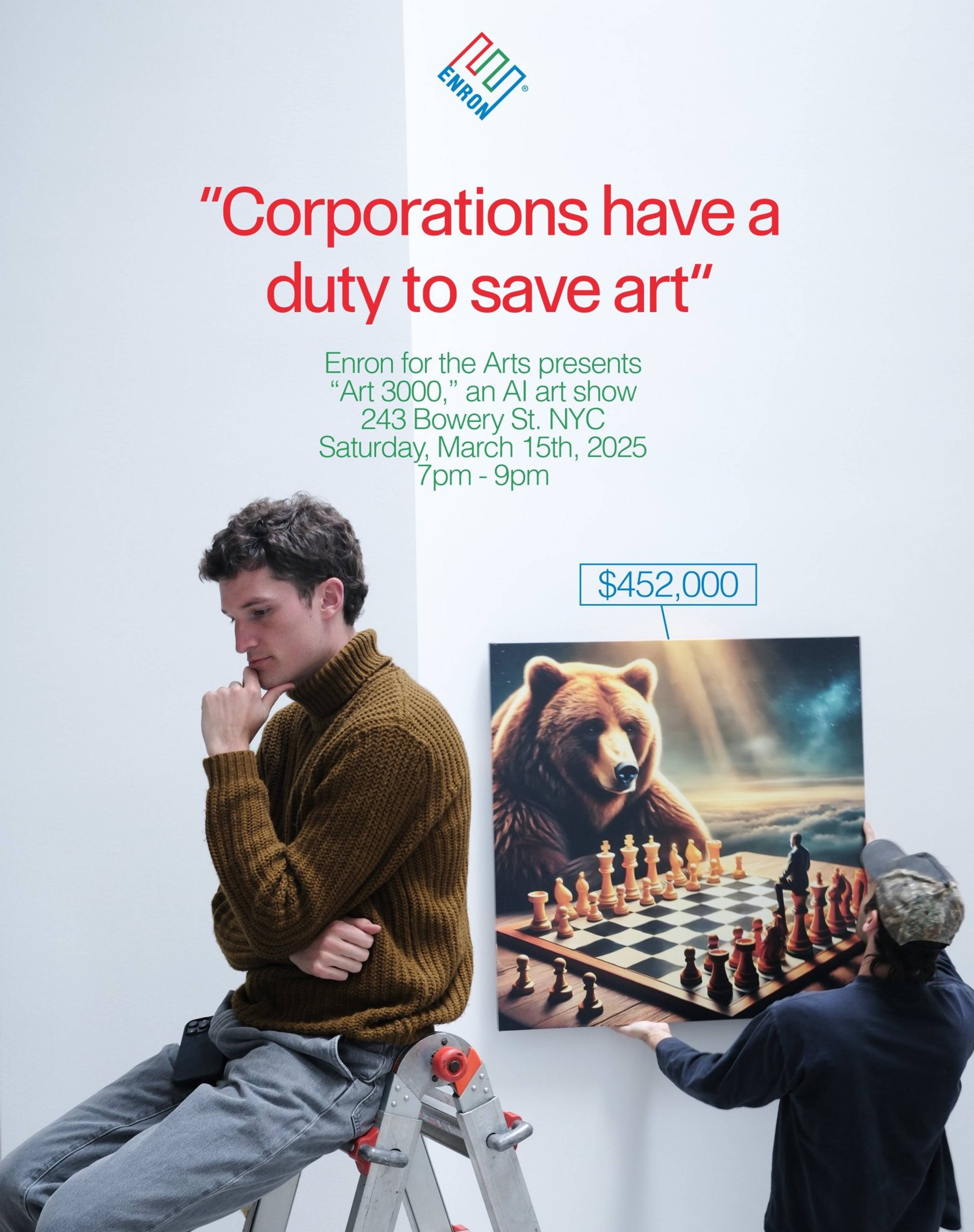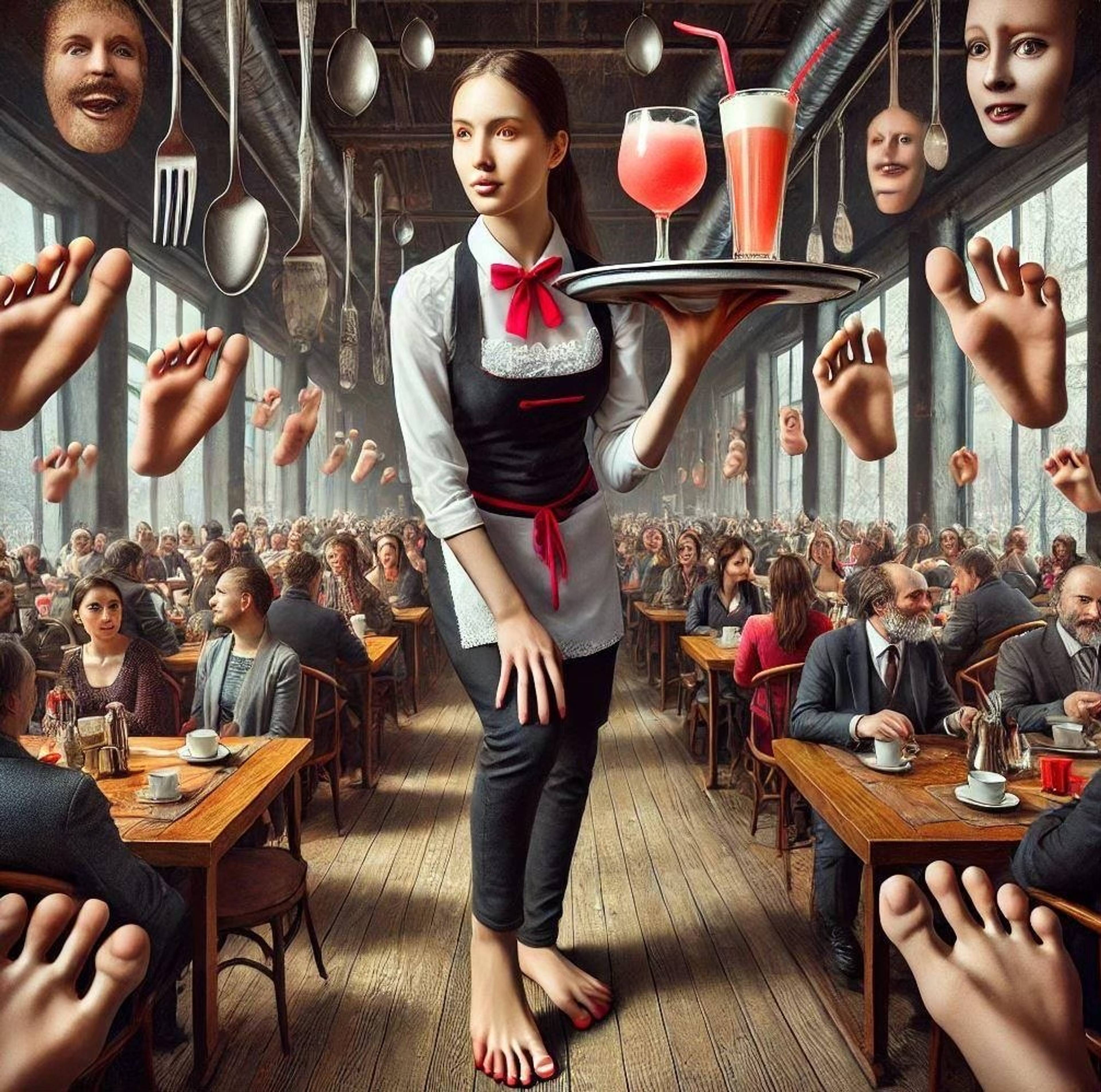There’s a bar near New York University called PubKey. As in “public key,” the code that lets people send you encrypted data, and cryptocurrency. It’s a normal dive bar, except often crammed with crypto bros in shirtsleeves, they take bitcoin, and there’s a crypto price ticker on the wall and Pepe the Frog dolls among the tchotchkes and taxidermy. Trump has been there. It’s a decent place to dip into the agro current of culture’s rightward drift.
The other night, I was there with a friend, an AI expert; and the young man two stools down from us had a cat on his shoulder. Turns out he works for a labor union, but is surprisingly boosterish on robots. You could sense his yen as he described the humanoid Tesla Optimus, how at $40k or even $60k a unit it still beats a human worker’s salary. They used to call this accelerationism, back when thirsting for our replacement by machines was considered an extreme position. “Everything’s computer,” Trump mused in March, sitting in a prop Tesla. But not everything enough! Government: computer can do it. Money: computer but encrypted. Artists: computer, with feeling.
But this techno-authoritarian soup also has strong xenophobic flavors. The same tech mavens who think AI can do your job (not theirs, though) also indulge replacement theory, blaming the decline of Western civilization on immigrants and their woke enablers. For instance, Alex Karp, cofounder of the Silicon Valley defense contractor Palantir, thinks government should be run like a tech company, meaning benevolent fiat from a self-elected, IQ-obsessed elite – and their AIs. This needs to happen, he insists, because Western civilization is collapsing, for want of direction, pride, a national project, having been undermined by diversity, multiculturalism, acceptance. Recently, Palantir announced a contract with the US government to build immigrant-hunting software.
PubKey bar, New York
Why is replacement by immigrants the end of the country, but replacement by machines its salvation? This probably has something to do with the presumption that, in some fundamental, quasi-religious way, these machines will resemble their makers. It’s the belief that an AI model represents a synthesis of all (Western) knowledge to this point, and can be shaped and guard-railed to benign perfection. Not replacement, but advancement: more human than humans, as defined by the smartest guys in the room.
Which brings us to Enron. Last year, a group of guys bought the trademark of Enron, a US finance and energy company that collapsed in scandal in 2001 under the weight of an infamous Ponzi scheme, and resurrected the brand as an elaborate satire. It’s the activist duo The Yes Men with a budget. The New Enron, goes the joke, is a green energy company selling egg-shaped nuclear reactors for the home. They’ve produced glossy product-launch porn and covered other companies’ semi-trucks in the Enron livery to make it seem like their product is moving.
And, like any good corporate citizen, Enron supports the arts. Last month, they hosted “Art 3000” in New York, buffoonishly billed as “the first gallery exhibition made up of AI images.” These Midjourney renderings on click-to-print canvases included an austere portrait of a mortar and pestle nested in a larger mortar, and a waitress carrying a tray past rows of disembodied feet. A dense crowd circulated between the open bar and an ice sculpture of the Enron logo, while a string trio provided ambiance. I was introduced to the CEO, a lanky 20-something in a blue velvet jacket. “We’re defibrillating the heart of what it means to be human,” he said, deep in character. “Because we’ve forgotten.”
Birds Aren’t Real rally, 2021. Courtesy: Birds Aren’t Real
Sadly, the time for intricate satire has passed. As part of the expansion of internet logic into meatspace, culture at large now obeys Poe’s Law: the more extreme and total your parody, the more people will think you’re serious. People inquired about buying the deliberately terrible art. The new Enron also gets steady emails about distribution deals for the absurd, nonexistent eggs. When the young pranksters launched an $ENRON meme coin in February – a gag or a fundraising scheme, it’s unclear – it was promptly sniped. In a simpler time (2018), some of these same guys propagated the fake conspiracy theory “Birds Aren’t Real,” which holds that the birds flapping around North America are all robots, replaced over decades with government surveillance drones. The lasting tragedy is that the mechanical spybirds are perfectly convincing replicas. They shit on your car and you can eat their meat. They’re more bird than birds.
“Art 3000” ended in iconoclasm. A sinewy beatnik with long hair performed what I remember as “Eulogy for a Paintbrush.” He shuddered and shuffled around the ice sculpture, vocalizing the scratchy sounds of the TV painting teacher Bob Ross making angry trees. Then he seemed to snap. “The world! Requires! YOU!” he yelled. I think he meant that the world needs real people. He pushed over the sculpture, sending bricks of ice scooting toward the culturati, crypto bros, and curiosity seekers huddling against the walls. “Fuck Enron. Fuck AI art!” Security dragged him away.
The afterparty was hosted by Craig Watson, an entrepreneur and Enron supporter, whose ventures include a chain of immersive VR experiences with haptic and olfactory feedback. Watson ushered us into the SoHo apartment of the artist Gregory Colbert. Google him and the only thing that comes up is “Ashes and Snow,” a mammoth exhibition of 2-by-3 meter sepia-toned nature photographs shot in dozens of countries that toured Venice, New York City, Tokyo, Mexico City, and Santa Monica in the early 2000s; and, according to Colbert’s suspiciously laudatory Wikipedia page, it holds the attendance record for a show by a living artist. His studio is a refurbished historic theater building, all hand-cast brick and beam lumber, with a selection of big freestanding prints in lightboxes of a woman dancing underwater with manta rays. Mounted on the wall was a gigantic image from “Ashes and Snow”: a robed child and an elephant, face to face, kneeling in a featureless desert.
The Play of Fantasies and Fears, AI art piece shown at Enron’s show "Art 3000," New York, 2025
Enron’s advertisement for egg-shaped nuclear reactors for the home
A Swiss curator once praised Colbert in a letter of introduction: his projects “are not about ‘inventing’ new images of being ‘modern,’” he wrote. “Instead Colbert is trying to return the image to its purest state, to touch the heart, to enchant, to remember forgotten ideals, and to show that all truth and reality is classical and eternal.”
If the Enron art show was a joke about the human soul, here was the unironic version, self-centered and grandiose, an earnest engagement with the planet and its creatures through an expensive lens. In this pre-AI, antediluvian world, enchanted by bedrock truth to the point of self-parody, art connects people and cultures across time, redeems them even. And artists have license to think the world fits their image of it. Among the room’s collection of bleached coral and dusty Latin books, my AI expert friend clocked a Tibetan religious text bound in carved wood. It had been modified. Inserted behind the front cover, like a new yet timeless frontispiece, was one of Colbert’s elephant photos.
A couple weeks later, my girlfriend and I were having a pint in Dublin’s oldest pub, The Brazen Head, which traces its lineage to the 12th century. The woodwork on either side of the cash register was covered in shoulder patches from US police and sheriff departments. Orange County. Birmingham. A group of older gentlemen wore matching jackets embroidered with crossed French and Irish flags. We struck up a conversation with one of them – they come once a year, he said, from France, to play a friendly match of football. “I love Ireland,” he said. He pointed at the brick wall. “There’s culture here. It doesn’t change. In France, we have nothing.” He made a vanishing gesture. “Pfft. Nothing.” No culture? What did he mean? He started to explain: “I’m not a racist, but…”
What is “culture,” and what does “replacing” it even mean? The heritage that Western civilization warriors say they’re saving isn’t being replaced; it’s gone already.
Yeah, Ireland has its culture, its heritage, including the shamrock industrial complex and hackneyed love of law enforcement familiar to New Yorkers. Celebrating Irish culture is a safe way to take pride in whiteness. But what is Irish culture, really? Our tour of the Guinness brewery was startlingly modern – factory floors stripped of machinery, replaced by audiovisual presentations about roasting barley and “the magic of yeast.” At the grand wooden library at Trinity College – Ireland’s contribution to the European equivalent of the Ivy League – the centuries-old leatherbound volumes were off being catalogued and conserved; instead, screens in the storage bays looped sensory, hypnotic videos of things like delicate books being slowly removed from shelves or piles of dust being vacuumed from ancient bindings. The library’s prized possession is an illuminated copy of the Gospels painstakingly written on vellum by medieval monks. But a stuffy old book like that can only be displayed two pages at a time. For the rest, in a red metal pavilion next door, there’s the “Book of Kells” immersive experience.
Is this digitization of Irish heirlooms not replacement? What is “culture,” and what does “replacing” it even mean? The heritage that Western civilization warriors say they’re saving isn’t being replaced; it’s gone already, swapped for something much more fungible and agnostic. The hardscrabble docks of Dublin have been levelled and rebuilt with glass office buildings so loaded with tech companies that they call it Silicon Docks. One of them is Airbnb, motto: “Belong Anywhere.” The Silicon Everywheres flatten the globe. And this is a replacement theory the West’s enlightened despots can get behind. In their way, they commit the same hubris as an artist on safari with a large camera. They think they can access an inner truth through scale, as if more resources, more funding, bigger stronger faster equals more spiritual. But innovation (not to say progress) doesn’t go backwards. Whoever thinks robot doubles and AI nation-states can bring humanity back to its roots sees a world that reflects their own image. You’re not invited.
